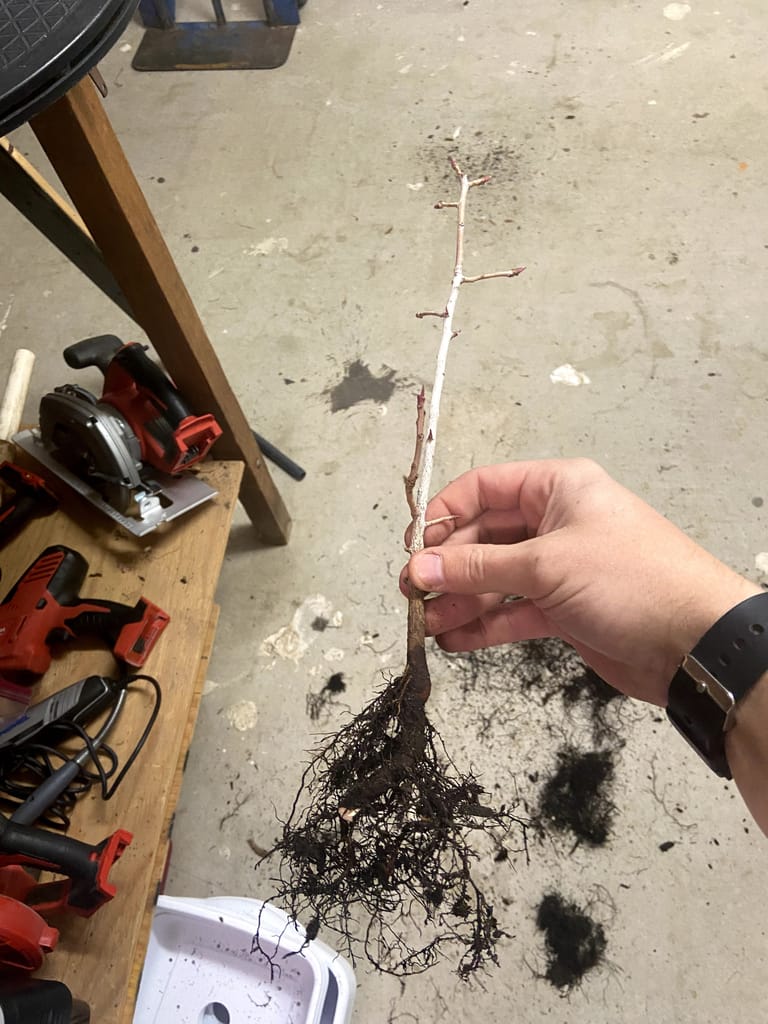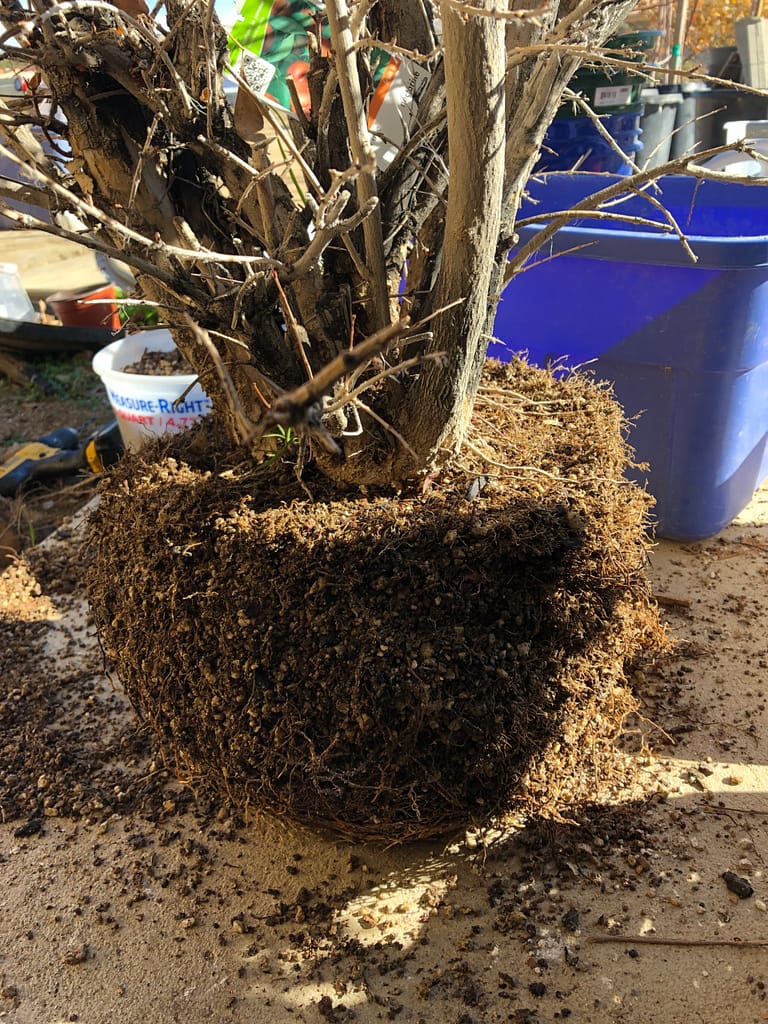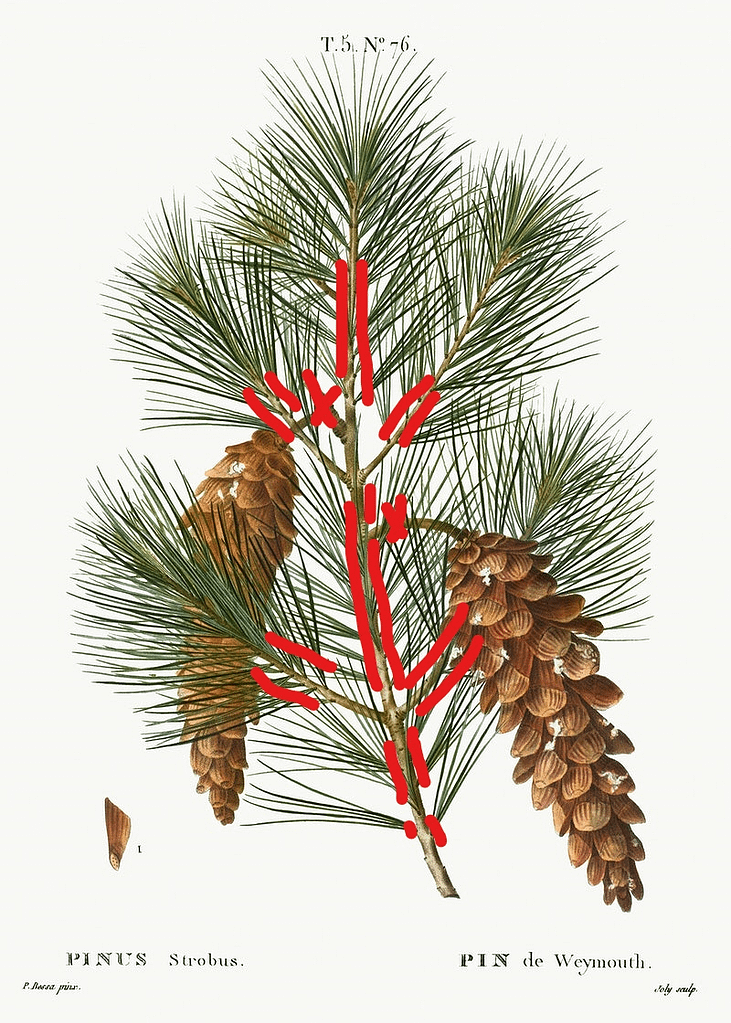Transplanting a tree can involve a process as simple as moving a tree sapling, or can be as difficult as needing a semi-truck tree spade to dig up a mature tree. Depending on the needs of the project, it can definitely be done and there are ways to increase the survival rate and make it successful. Depending on the situation, you can take many different approaches. Below you can click on which situation suits your best, but I strongly recommend reading about why the tree needs certain things to ensure the transplant is successful.
The following suggestions are aimed at woody ornamental trees or plants. This logic does not directly apply to bulbous plants, succulents, cacti, or other annuals.
- You are in no hurry to move the tree, but have access to it
- You are moving it from somewhere outside of your immediate area to your home (transplanting from a friends home or from private property)
- You are moving it out of season and don’t have the ability to follow certain steps to ensure success
- You are removing plants from the ground to pots to take with you when you move
Physiological Understanding
A basic understanding of trees and how they need water is that the surface of the needles/leaves/scales lose water through a process called transpiration. This water loss is replaced by the plant as it absorbs water from the ground with its roots. Transpiration occurs with the purpose of moving water and minerals to the leaves and cooling the plant during high temperatures. This process becomes interrupted when we dig up a plant. The way we raise success when transplanting a tree or plant is by reducing the amount of water loss it experiences, trying to retain as much of the fine roots that absorb water as possible, doing it at a time where the water demand is low, and setting it up for success as it goes forward. All of the things we do when we transplant trees or plants is rooted (pun intended) in these mechanisms.

Basic Rules of Transplanting
Some basic rules to keep in mind are:
- Transplant while the plant is dormant or about to start a period of growth
- Keep as many fine roots as possible, as they control uptake of water (“I’d rather have a handful of steel wool than a bowl full of spaghetti.” -Randy Knight)
- Keep it out of the wind and sun if possible during recovery, especially when leaves remain on the plant
- Prune the tips of any broken or torn roots to provide a clean cut site to heal and for new roots to emerge from
These rules have exceptions, but for the most part are good guidelines to use for transplanting.
Assessing The Situation
There are a few things that you can easily answer that help to guide the transplantation process. They are:
- Is it an evergreen, broadleaf evergreen, cactus/succulent, or a deciduous tree/plant?
- What season are you currently in?
If you have a succulent or cacti, you can do things much differently and they’re much more forgiving for the most part. I’d also strongly suggest using a towel to wrap around a cactus to help move and carry it. Evergreens, broadleaf evergreens, and deciduous plants all follow a process that is similar to each other.
The season will determine how drastic of measures you need to take to ensure survival. Transplanting your average deciduous tree or shrub in Summer is going to require as many tricks in the bag that you can pull out to survive, while the same plant during early Spring should have little to no problems at all.
How Big Is Too Big?
If you’re attempting to transplant a tree that has a trunk diameter greater than 2″ then you should make a better choice and either leave it or call an arborist. However, if the plant or tree is smaller then it can be done. For smaller trees you should dig a root ball between 8-12 inches wide for every inch of trunk diameter. Then the depth of the root ball should be around 1/2 to 2/3 as deep as it is wide. This is a general rule and doesn’t need to be followed exactly, but helps to gauge what is needed.
If a tree or plant is a smaller seedling, then the transplanting process is much more forgiving than a large established tree or plant in the landscape.
Packaging And Transporting
Transporting properly can be a big deal when it comes to success rates. Damage to the root ball can occur if the root ball is not securely wrapped, covered, or if the tree is lifted by the trunk and not by the root ball as a whole. Follow these guidelines when preparing and moving your plant.
- When handling the plant make sure to support the root ball (usually heavy wet soil)
- Cover the root ball with burlap, stretch wrap, tarp, or blanket
- Secure the covering with twine or something similar (stretch wrap works wonderfully if traveling longer distances)
- Covering the foliage (if any is on the tree) and root ball during transport in a truck or open air helps to reduce transpiration and direct sun.
Situational Examples
No Hurry to Move and Have Access
You are going to want to use several of the tips listed below including: Watering especially close to the trunk to develop a root system there, root pruning as explained below, and moving the plant during a dormant period (typically late winter). You can use the greenhouse, heat mat, and sun and wind protection as well if their fit your situation.
You Are Moving From Outside Your Immediate Area to Your Home
This situation gives you less control over some variables. What makes this situation successful is following as many baseline things as possible. Doing this in the proper season, retaining a good amount of fine roots, and giving it proper aftercare will be paramount to the success of the transplanting. If possible, water a day or a few days before you plan to transplant it. Having protection from full sun and wind is something you can control to an extent and will help in this situation where you have few other options. Even with a tree you could put up a ladder with a blanket on it to help block the wind directly to a smaller extent. Again, if you can use a heating mat, greenhouse, and additional sun and wind protection in your situation these all will increase the likelihood of survival.
If the plant is an evergreen you can remove a small portion of the leaves to reduce transpiration during recovery. You should be doing this in the proper seasons in this situation, so this would not be needed for deciduous plants.
You Must Transplant Out of Season
I want to briefly mention that mid Spring and mid Fall are not out of season, but late Spring until mid Summer are definitely out of the transplanting season. Later Summer and early Fall is an acceptable time to transplant, but precautions should still be taken if possible.
This is the most difficult type of transplanting, but it can be done. There are specific mechanisms in plants that we can manipulate to successfully accomplish transplanting in this situation. I strongly recommend that you move the plant to a pot in order to have more control of the environment during recovery and then move to a permanent location after recovery has happened.
Full shade and wind protection is a must. This is part of the reasons for suggesting a pot as a temporary home. Heating pads and a greenhouse can make a significant difference, and in the case of the heating mat the difference between life and death for some species that are difficult to transplant.
The most important part of transplanting a mature plant in this case is to cut back the foliage significantly. This removes the ability to transpire through the foliage and instead retains that water. This initiates a stress reaction in the tree and it uses its remaining stored energy to push out a new set of leaves. If you’re dealing with a tree or shrub that has an important structure (such as a tree) then you can remove the leaves by pulling or trimming them off at the petiole.
Removing Plants From The Ground To A Pot
This requires a different process than the other situations because the pot (and your ability to move it) determine the root ball size. You’ll want the root ball to be a bit smaller than the pot. You get the added benefit that you can control the environment much easier with a potted plant than you can if it is planting in its permanent location. Heat mat, greenhouse, and protection from the sun and wind can make this a much easier transition.

Tips and Tricks For Success
Greenhouse
If you have access to a greenhouse, then you’re in luck. Greenhouses help by maintaining high humidity levels that decrease the amount of transpiration the plant experiences. This lowers the need for an extensive root system to replenish the water that is lost through the leaves. Keeping a transplanted tree in a greenhouse for a varying amount of time depending on the circumstances will help tremendously.
Alternatively, if you’re able to make a homemade makeshift greenhouse that will keep humidity high, that can help as well. This is obviously difficult for large trees, but can be feasible for smaller saplings and plants. The danger of this, is doing it in the later Spring or Summer and the plant burning up inside that greenhouse. High humidity does not offset high temperatures when it comes to transpiration.
Sun and Wind Protection
Sun and wind both increase the rate of transpiration in plants. Some it affects more than others such as deciduous plants and some it affects less like cactus and succulents. Either way, limiting the amount of sun and wind the plant experiences will greatly increase the success rate. Afternoon sun is the main culprit that you need to protect the plant from. Morning and evening sun are not as intense and are the types of sun you want the plant to experience at first.
Watering
If you are able to soak the plant the evening before you transplant it, do it. This allows the plant to become fully hydrated and this directly increases transplant success.
When a plant is transplanted its roots need to have constant access to moist soil for the limited roots. If not enough water is provided then even a good transplanting can fail. This is significantly more difficult to know how much to water when moving it into the ground instead of a pot, but you can keep an eye on the moisture with the top few inches of soil. If you’re potting up a plant or tree, make sure to use well draining soil so that the soil doesn’t remain soggy.
One big exception is cactus and succulents. While they vary a bit between species, many of them require the cut roots to dry out before watering again. In many succulents you shouldn’t water until you see new growth on the plant.
Heat Bed or Heat Mat
If you’re moving plants into a pot, then using a heat bed or mat can help stimulate root growth to happen quicker than normal. This aids in recovery and can be the difference in life and death in some species. Generally the ideal root growth temperature is between 70°F and 75°F, but some species may vary. Heating mats can be the difference between life and death for some species that are difficult to transplant.
Pruning Back Foliage
Pruning back the foliage can be helpful in certain situations, but isn’t always necessary. If you dig up a plant and get very few fine roots, the root ball falls apart during digging or transportation, you are transplanting out of season, or the root ball is small in comparison to the plant, then you can prune back the foliage to “balance” the foliage with the roots. This is appropriate for evergreens, broadleaf evergreens, and in leaf deciduous plants. This is especially useful when you have low relative humidity, full sun, and/or wind in the new permanent location. I would always recommend removing any new growth that is not fully developed as it loses water at a higher rate than mature foliage with a fully formed cuticle. For certain conifers that do not create new branching from old wood if no foliage is left on them such as: pines, fir, hemlock, and spruce, you can reduce the amount of foliage on the tree by pruning or needle plucking while making sure to leave foliage at the ends of the branches, otherwise those branches will die. (see photo below with needle plucking where the lines are and pruning the x’s)

This is unnecessary when you have a greenhouse or high relative humidity, wind, and sun protection. The foliage is the means through which the plant re-establishes its roots. However, if you cannot provide those protections then the foliage will transpire and lose water without a sufficient root system to replenish the water lost.
Removing Flowers And Seeds
Flowers and seeds are the means a plant has of reproducing. We don’t want the plant to waste any energy trying to reproduce when we’re destroying its root system. Removing these helps direct the plants energy to root development.
Root Pruning Prior To Transplanting
If you have access to the plant you’ll be moving and have no hurry you can root prune it as time goes on and this makes the transplantation process much more successful. You do this by cutting the roots while they’re in the ground with a shovel or drain spade around in a semi-circle right before a period of growth (Spring/Fall) and leave it through that season. You need to do this within the general rule of root ball size. You don’t want to make this cut 12″ away from the trunk if you only plan on the root ball having an 8″ radius (16″ wide), rather you want to make this cut at 5 or 6″ away from the trunk if your root ball will have a 8″ radius. This initiates root growth closer towards the trunk and increases the amount of roots that you’ll dig up and be able to transport with you.
Depending on how sensitive the plant or tree is and how long you have before you need to move it, you can do this over a period of several years or one year (two growth seasons of Spring and Fall).
